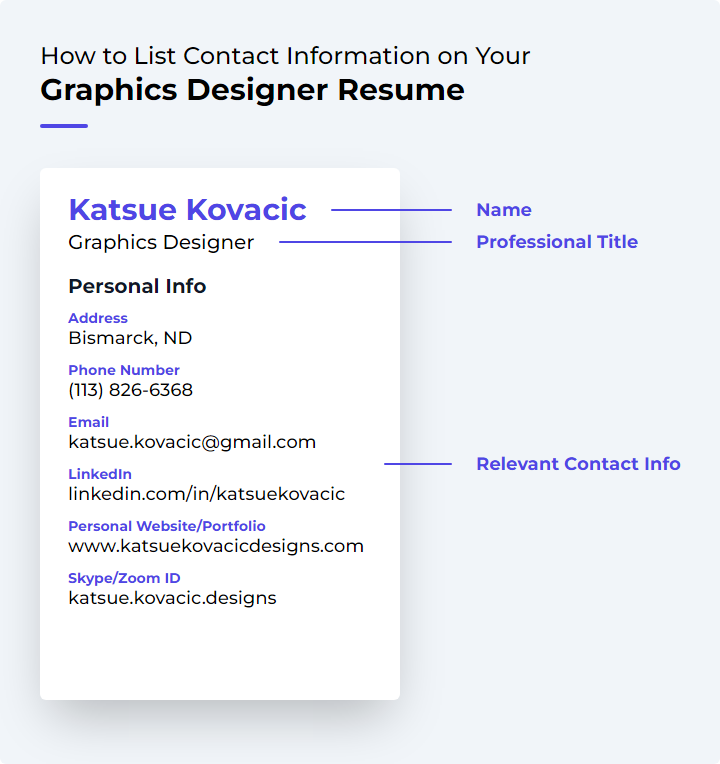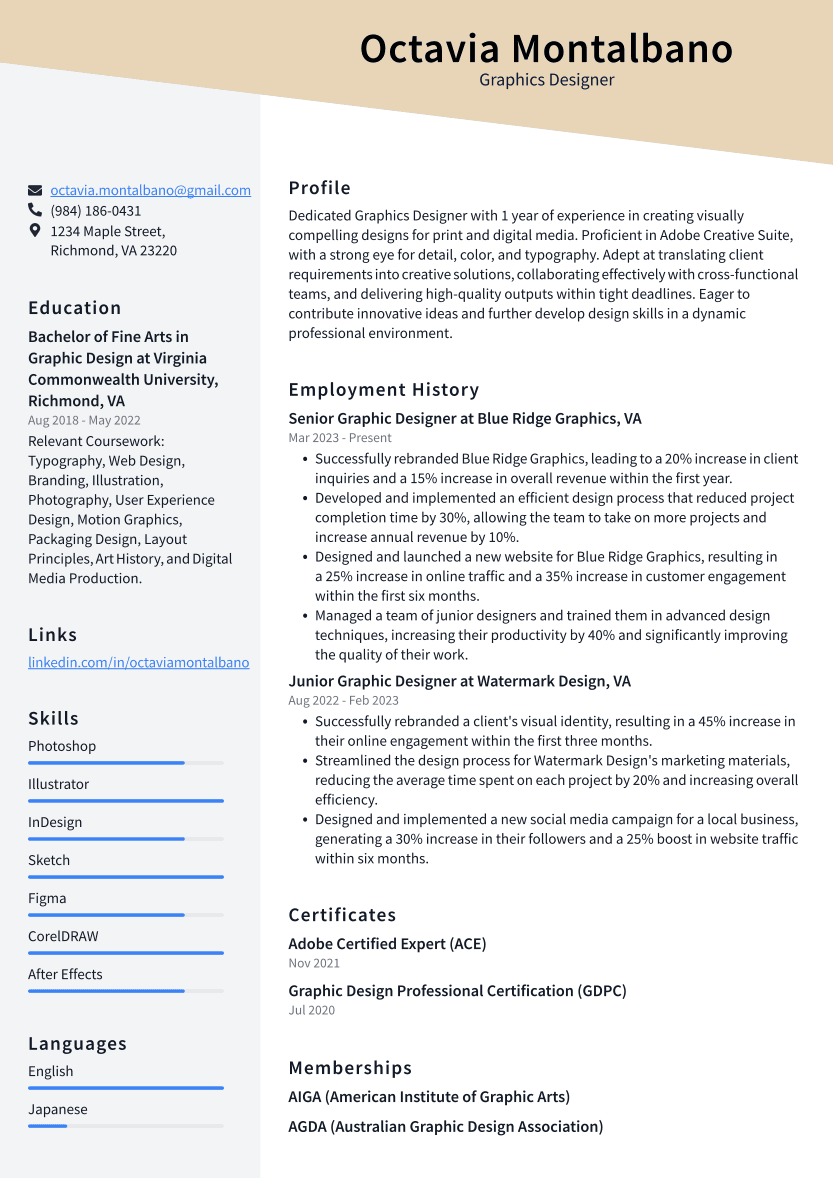Graphics Designer Resume Examples
Writing a great graphics designer resume is important because it is one of the first things a potential employer will see when they are considering you for a position. It is your opportunity to make a good first impression and sell yourself as the best candidate for the job.
Create your resume
Select from 7 professional resume templates
If you're looking for inspiration when it comes to drafting your own graphics designer resume, look no further than the samples below. These resumes will help you highlight your experience and qualifications in the most effective way possible, giving you the best chance of landing the graphics designer job you're after.
Essential Components of a Graphic Designer Resume
A graphic designer's resume is a critical tool that showcases their artistic ability, professionalism, and unique brand. It's a visual testament to their capacity for conveying information aesthetically and effectively.
An impactful graphic designer resume transcends a mere list of skills, experiences, and educational background. It demonstrates the designer's flair for design and meticulous attention to detail. To ensure your resume stands out, it's essential to understand the purpose of each section and how to optimize it to highlight your strengths and individuality.
Clarity and readability are paramount, but infusing your resume with personality and uniqueness is equally important.
1. Contact Information
Contact information is crucial, particularly for a graphic designer. It's typically positioned at the top of the resume for easy visibility.

Include your full name, phone number, and a professional email address. If you have a LinkedIn profile or an online portfolio, add those links to allow potential employers to view your work immediately. Consider whether to include your home address based on your preference and the job's requirements.
While contact information is essential, be mindful of privacy and avoid oversharing personal details.
Ensure your contact section is concise, accurate, and professional, facilitating easy communication for interested employers.
2. Objective or Summary Statement
The "Objective or Summary Statement" introduces your professional persona. It should be brief, clear, and articulate your career goals and unique value to potential employers.
For experienced designers, summarize your years of experience, notable clients, and significant achievements. New graduates or less experienced designers should focus on relevant skills and education. This section should capture the hiring manager's attention and encourage them to continue reading.
Related: Top Graphics Designer Resume Objective Examples
3. Skills and Proficiencies
The "Skills and Proficiencies" section is your opportunity to highlight technical abilities, software expertise, and other talents that qualify you for the job.
- Tech Skills: Proficiency in design software like Adobe Creative Suite and 3D modeling tools.
- Creativity: Examples of innovative thinking and design achievements.
- Communication Skills: Ability to articulate ideas and collaborate effectively.
- Time Management: Demonstrated capacity to manage deadlines and multitask.
- Attention to Detail: Precision in design elements and aesthetics.
- UX/UI Design Skills: Competence in digital design and user experience.
- Problem-Solving Abilities: Creative solutions to design challenges.
- Knowledge of Print & Digital Media: Understanding of design requirements for various mediums.
Provide real-world examples to strengthen your claims of expertise.
Related: Graphics Designer Skills: Definition and Examples
4. Work Experience
The "Work Experience" section illustrates your practical application of skills. List past positions in reverse chronological order, detailing your role, responsibilities, and achievements.
Emphasize experiences that showcase creativity, technical proficiency, and design acumen. For freelancers or those with limited professional experience, include internships, volunteer work, or personal projects.
Align this section with the job description, highlighting relevant experiences that resonate with the employer's needs.
5. Education and Certifications
The "Education and Certifications" section outlines your academic and professional qualifications. Include degrees, certifications, relevant courses, and any additional training that enhances your graphic design credentials.
Balance educational achievements with practical experience and a strong portfolio that exhibits your work.
Related: Graphics Designer Certifications
6. Portfolio of Work
Your portfolio is a visual representation of your skills and style. Include a curated selection of projects that demonstrate versatility and address various design challenges. Quality trumps quantity; choose work that aligns with the job you're applying for.
Provide easy access to your portfolio from your resume, whether it's an online link or a mention of a physical copy for interviews.
An exceptional portfolio sets you apart by providing concrete evidence of your graphic design prowess.
7. References
The "References" section can validate your skills through endorsements from those familiar with your work. Select references who can vouch for your abilities and ensure they agree to be contacted.
Provide complete and accurate contact details for each reference, and tailor this section to the job application's requirements.
Professional references can substantiate your technical skills and creativity, offering a competitive edge in your job search.
In summary, a well-crafted graphic designer resume should effectively communicate your contact information, professional objectives, skills, work experience, education, portfolio, and references, all while reflecting your unique design sensibility.